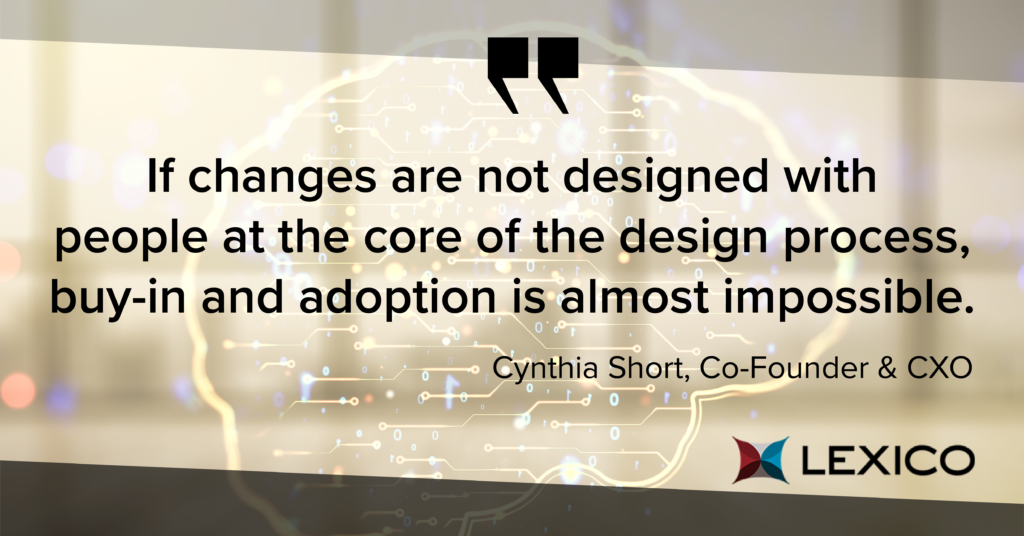
What is Human-Centered Design?
Human-centered design is very often narrowly thought of as being applied to a product, visual, or interface design work. But human-centered design is an approach and a mindset that has application across the board in enterprise work, including transformation initiatives.
The 3 Phases of Human-Centered Design
Clarify
The first phase of human-centered design, clarify, is dedicated to data collection and customer observation to gain a deep understanding of the problem at hand. At the core of this phase is the need for empathy. Understanding users’ experiences and emotions is essential. User research plays a pivotal role in this phase, aiming to identify both explicit and latent pain points. Explicit points are those users can describe, while latent points are unspoken challenges that require keen observation.
Ideate
Moving from clarify to Ideate, the goal is to foster creativity and overcome cognitive fixedness. Design thinking tools, such as systematic inventive thinking and brainstorming, are applied in this phase. The emphasis is on generating a diverse range of ideas, ensuring that the team does not get attached to a single solution before thorough testing. Overcoming cognitive fixedness allows for innovative ideas to surface and prevents the team from being limited to conventional thinking.
Implement
The final phase, Implement, involves communicating the value of the innovation to both internal and external stakeholders. This requires reflection on the organization’s culture and an assessment of group dynamics. It is crucial to recognize that the work doesn’t conclude with implementation. Continuous adaptation is essential, considering that customers’ wants and needs will evolve over time. A user-centered approach ensures that the team is empowered to develop and iterate on solutions, fostering a culture of innovation and responsiveness to evolving market demands.
Why Do We Need Human-Centered Design in Transformation Work?
When dissecting the large failure rate of transformation work, too often people are at the center of failed transformations. If changes are not designed with people at the core of the design process, buy-in and adoption is almost impossible. Regardless of what type of transformation the enterprise is navigating – functional, digital, process, business model, cultural – people embracing the change is crucial to success.
The Principles of Human-Centered Design
So how do you employ human-centered design in transformation work? While there are many, I’ve found two key human-centered design principles that, when followed, can make a huge impact in a transformation:
1. Putting people first in unexpected places.
It’s not just understanding people as end-users of new technology or processes, even though it’s critical. People can and should be applied to all of the elements in a transformation: Outcomes, timing, project structures, success measures, communications, team design, etc. Transformations are all-encompassing – the entire experience of the work should be designed to bring people along.
2. One size does not fit all.
Efficiency in work is always a goal and is most often approached through the lens of “one for all”. To fully engage people there needs to be a significant level of customization that meets people where they are at in order to truly see success. Acknowledging different groups’ needs and preferences, and designing flexibility into the work to accommodate those differences at the beginning, can actually provide more efficiency in the long run.
Conclusion
There is an opportunity for better outcomes if we avoid the “Here’s a process we’re gonna follow…” or “Here’s the checklist we’re gonna stick to…:” approach to transformation. That is how work gets very process-driven and technology-based, even robotic. The robots haven’t taken over – yet! – so taking a human-centered design approach to your transformation work can deliver the meaningful change your organization needs.
If you are looking to take a human-centered approach in your transformation work, Contact Lexico today for human-centered design consulting.
